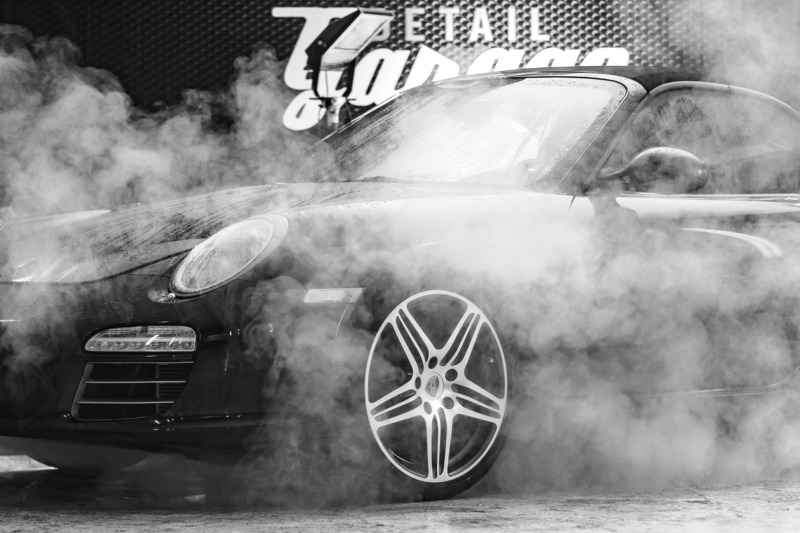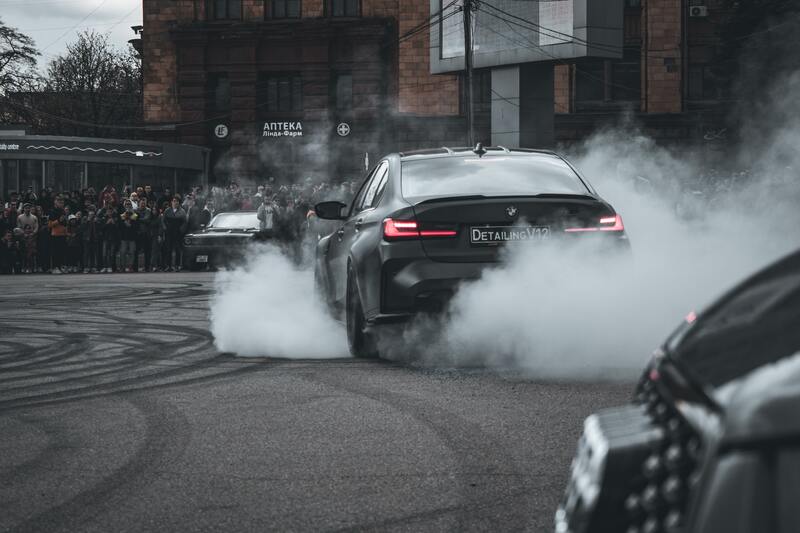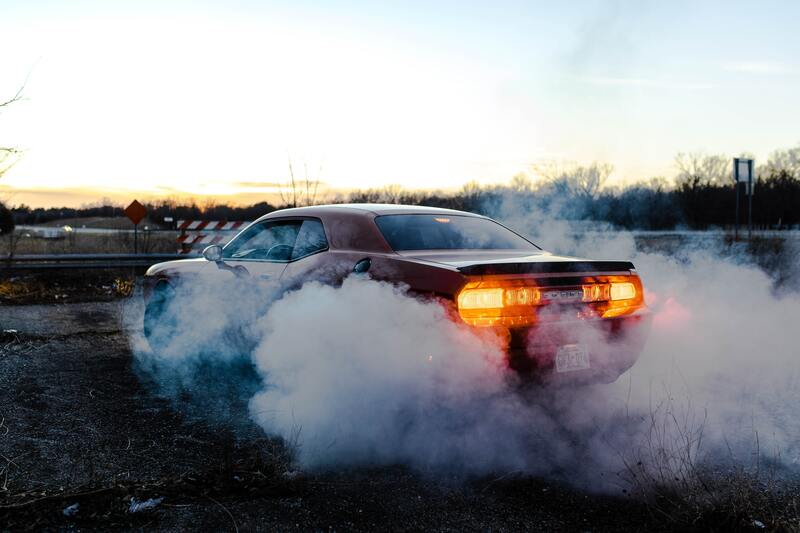A car burnout has often been performed during serious racing and motorsports. This is a practice to warm up a car’s tires before starting a race. Also, it is useful while parading a car. The race winners also perform burnouts to celebrate the win. Needless to say, this is an excellent way to showcase a car’s power and capability. However, is it safe to do car burnout? To find out the answer to this question, you should read today’s post.
Though it feels exciting to practice burnouts, without proper precautions, it may cause hazards for cars and the environment around. So to ensure a successful maneuver, before jumping in your car, understand what a car burnout is, how to do it perfectly and what the advantages and risks are associated with it.
Without further ado, let’s dive into the discussion.
What Is Car Burnout?
A car burnout is often performed as a stunt by spinning the car’s tires while keeping the car still. The feeling of the car vibrating underneath you, coupled with the intense white smoke that forms as the tires rub against the road, make it an exciting event. Though rear-wheel drives are typically known to be better at executing a burnout, both manual and automatic transmissions are able to pull off this stunt – albeit with different methods.
How To Do A Car Burnout
To discuss this, you need to know about different types of car burnouts as different burnouts are performed in different ways.
Front Wheel Drive (FWD) Burnout

Practicing FWD burnouts is a bit easier than RWD burnouts. This type of burnout is often performed in front wheel drive vehicles. One can do it perfectly by grabbing the parking brake to lock up the rear wheels together with stomping the gas to interrupt the front wheels loose.
Rear Wheel Drive Burnout

To do RWD burnouts perfectly, one needs to grab the brake and gas pedals of a vehicle simultaneously. One needs to modulate the brake pedal and let the rear wheels spin while keeping the front tires motionless. The balance between the front brake and rear brake should be perfectly coordinated so that the car cannot move forward while the engine power gets transferred to the rear wheels and they continue spinning.
Four Wheel Drive / All Wheel Drive Burnout

This practice is much more difficult than FWD burnout and RWD burnout. A four wheel drive or all wheel drive vehicle has better traction than FWD and RWD vehicles. Thus the engines need to be way more powerful than FWD or RWD vehicles so that all the four tires loose simultaneously and eventually start spinning for just a short while before all the four wheels obtain traction.
Additional Techniques of Burnout
The cars having insufficient power to perform burnouts at motionless position follow different techniques to do burnouts. To do this, one needs to keep the car into reverse gear, maintain a faster speed than usual and after that instantly put the car into first gear and start accelerating. This technique is not always recommended as it puts significant pressure on drivetrain components, reduces the lifetime of wheels and eventually damages the transmission.
Another burnout practice often performed by the car race winners celebrating the victory is to position the car in a certain way so that the car’s front section is against the outside wall of the race track. Then the driver starts spinning the real wheels to keep the car in the place.
How to Perform Car Burnout In Manual Transmission
To do a burnout in a manual transmission vehicle you first start in neutral, then you press and hold the clutch, shift into first gear, floor the gas, and finally dump the clutch and quickly move your foot onto the brake pedal to hold the brakes. After this you can then release the brakes to peel out or you can stand on it. It is worth noting that this will put a large amount of strain on your drivetrain due to the shock from engaging the clutch.
How to Perform Car Burnout in Automatic Transmission
Doing a car burnout in an automatic car is easier. Just follow the below-discussed steps:
- Find a safe obstacle-free location. Starting the engine, keep your left foot on the brake pedal, point the wheels forward and release the handbrake after shifting the selector to 1 or D.
- Don’t forget to switch off the traction control.
- Brace yourself and push the gas pedal while holding down the brake pedal. Rev the engine and slowly release the brake pedal to induce tire screeching smoke.
- To stop the burnout, simply release the gas pedal and make a quick stop.
Necessary Safety Precautions
The safety precautions that should be taken before attempting a burnout are:
Do Through Practice
To ensure a successful and safe burnout, thorough practice is essential to make sure the procedure is done properly. Familiarize yourself with the car’s gear positions for each degree of acceleration and braking to minimize potential damage to the car. Good practice also involves doing a number of test bursts and understanding how the throttle response works at each speed.
Stay Aware of Clutch Burn
Car burnouts are a thrilling experience – that is, until you smell something other than the expected burning rubber. If you start to notice other strange smells, your clutch might be in trouble! It could mean that you’re not lifting off the clutch fast enough, so it’s important to back off and give it some time to cool down before trying again. Never ride the clutch or you risk causing serious damage. Learn from this experience and have fun – but always make sure to take good care of your car!
Don’t Perform a Burnout in an Area with Obstacles
Doing a car burnout can be an exhilarating experience, but your safety should always come first. To make sure you don’t run into any obstacles or hurt anyone else, be careful to choose a large open area with no pedestrians, vehicles or objects that can cause any harm. If you’re planning to do a burnout, choose an area free from distractions and other hazards – this will help ensure both yours and others’ safety.
Avoid Practicing while People Are Around
The smoke created from burnouts can contain hazardous chemicals that could cause breathing problems for those in the vicinity. Even something as seemingly harmless as flying road debris or broken car parts from a burnout can cause serious injury to bystanders. Therefore, people should not allow anyone stand too close while doing a burnout.
Conclusion
Car burnouts can be a fun and challenging way to show off your skills behind the wheel. However it’s important to understand both the safety risks and the legal implications that come along with performing a car burnout. Although understanding how to do a car burnout takes some practice and coordination, it can be an exhilarating rush when done correctly. When done properly and in a safe area, car burnouts can add an intensity to driving that you wouldn’t otherwise experience. As long as you are familiar with the safety hazards and keep yourself within legal boundaries, burnouts can make for a wild ride!
Q. Do burnouts damage your car?
Yes, burnouts can damage your car. The intense heat produced by the tires spinning against a hard surface can cause rapid wear on the brakes and other parts of the drive train. Additionally, burning rubber can leave behind harmful residue that corrodes certain components such as exhaust pipes and sensor cables. In some cases, transmission failure could even occur due to improper shifting caused by conducting a burnout.
Q. Why do people hold car burnouts?
People hold car burnouts for the adrenaline rush that comes with it. It is a risky activity, as it can damage a vehicle’s tires and even its engine if not done correctly. Burning out a car has also become increasingly popular in recent years due to the advent of racing and drifting competitions. Additionally, some people may simply do it as an act of showing off their vehicles and prowess behind the wheel.
Q. Do burnouts hurt your tires?
Yes, burnouts can wear down the tires on your vehicle. Heat that builds up in the tire due to excessive spinning causes the rubber to become soft and eventually break down. This breakdown can lead to decreased traction, pressure loss, irregular wear, and punctures.
Q. Is it okay to do a burnout in an automatic?
It is not recommended to do a burnout in an automatic vehicle. The stress put on the drivetrain from spinning one wheel can cause transmission damage, accelerated wear and tear, and reduce fuel efficiency. Additionally, it increases the risk of a dangerous loss of traction or control. You should only attempt if you feel comfortable with the risks involved.
